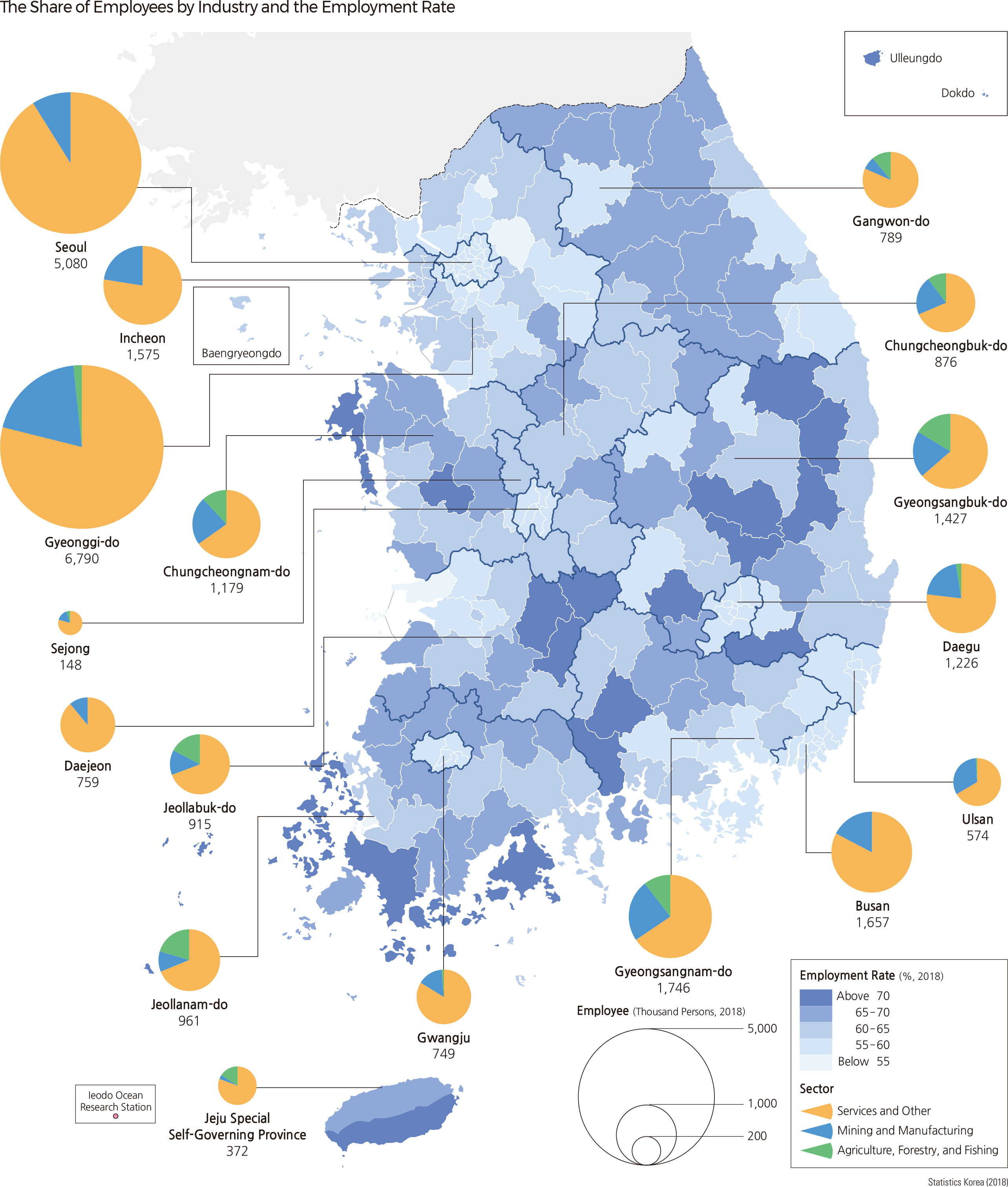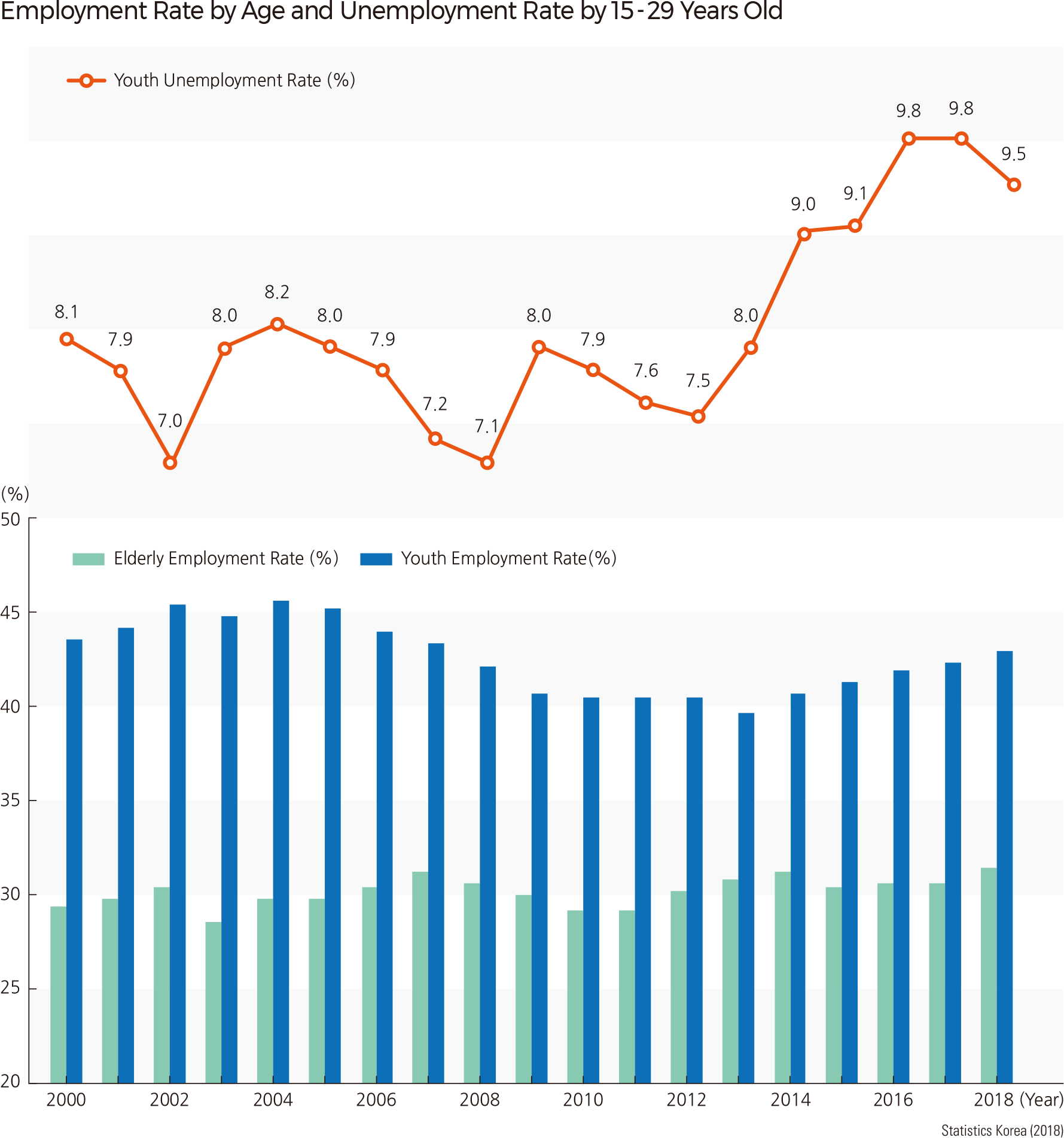English I 2019
A number of crises during Korea’s transformation into an economically stable world power deeply affected national economic activities. The two oil crises in the early and late 1970s, the decrease in competitiveness due to labor disputes and wage increases in the late 1980s, the Asian foreign exchange crisis in the late 1990s, and the global financial crisis of the late 2000s all had profound effects on Korea’s economy. The most recent crisis led to a lower employment rate and a higher unemployment rate, which cast a shadow over the national economy. Fortunately, due to intensive restructuring in both private and public sectors, the economy recovered relatively quickly, and it has started to show growth once again.
The employment rate is the share of the employed as a percentage of the entire population group older than 15 years of age, and the unemployment rate indicates the share of the unemployed as a percentage of the economically active population, both the employed and the unemployed. The employment rate is lower in metropolitan areas even though there are many jobs, but this is due to the high urban population that skews the statistics. On the other hand, the unemployment rate is high in urban areas due to the high number of job seekers compared to the size of the urban population.
Korea’s rapidly aging population is causing serious social issues such as a breakdown in securing support for the elderly and age-based income inequity. The number of young job seekers who are not reflected in unemployment rate statistics is also on the rise. The population of the elderly who are not supported by their children is also increasing, making elder employment issues more serious. In 2018, the employment rate was 70.8% for men and 50.9% for women, indicating a drop for men and a rise for women over the past 15 years. However, the proportion of non-regular workers for women is far higher than that for men, and the proportion is increasing. The increase in women's employment came in the relatively vulnerable job sectors. The youth unemployment rate has risen from 7% in the early 2000s to 9.8% in 2017, creating a serious social problem. Looking at the relative poverty rate (poverty being defined as less than 50% of the median income), the women's poverty rate appears to be higher than the men's. In 2016, the elderly poverty rate rose to 65.5%, showing this to be a very serious situation. |


